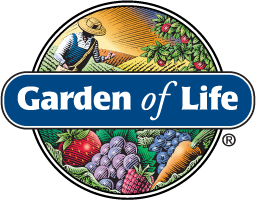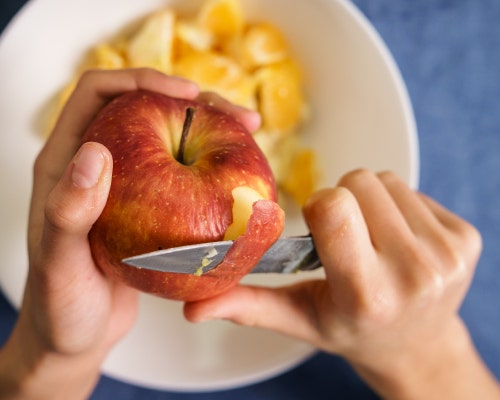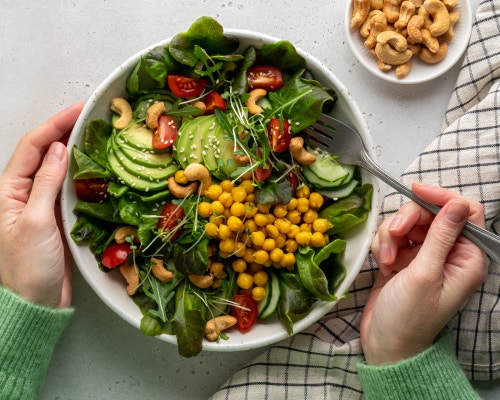Juicing: Health or Hype?
- 6/15/23


We’ve all seen headlines about the latest juice cleanses, endorsed either by a celebrity or your next-door neighbor. Whether it's for weight loss, clearer skin, or other health complaints, there's a juicing routine for it. But is juicing all it's cracked up to be? Can it provide the results it promises, or are there better ways to support your health goals? Let's dive into the reality of juice cleanses.
What is Juicing?
Juicing is a short-term liquid diet consisting of juices pressed from fresh fruits and/or vegetables, separating the juice from the pulp, seeds, and peels. It's meant to be temporary, usually done for 3 to 14 days. You might press your own juices at home or purchase premade blends.
Why People Do Juice Cleanses
Juicing is marketed to naturally "detox" the body from toxins we may be holding onto from our diet and environmental exposures.
The Western diet is heavy in ultra-processed foods, like pastries and fast food, that are high in sodium, added sugar, and saturated fat. These are high in calories and low in nutrition, and eating them all the time has been associated with a higher risk of obesity and negative health effects.
The thought is that by ridding the body of toxins, it can be better equipped to achieve health goals someone may have. For example, many people do a juice cleanse hoping to promote weight loss, boost energy, and feel better.
The Truth About Juicing
People are drawn to the idea of juicing to improve their health for many reasons, but that doesn’t mean they’re all based in science.
Plant-Based Nutrition
Fruits and vegetables are excellent sources of vitamins, minerals, and other compounds that offer antimicrobial, antioxidant, and immune benefits. Diets rich in plants are associated with better health outcomes.
However, juicing fruits and vegetables isn’t the only way to obtain their benefits. Plus, juicing removes most of the fiber from plants. This makes their natural sugars quickly digestible, having more dramatic effects on your blood sugar.
Fiber benefits gut and heart health, promotes satiety, and supports blood sugar regulation. Getting enough fiber is also associated with a reduced risk for certain cancers. Surveys show that fewer than 5% of adults consume the minimum daily recommended amount of fiber, which is only around 30 grams.
Weight Loss
Juicing is perceived as a way to achieve weight loss, but this is primarily because of the calorie-restricted nature of a cleanse.
Fruits and vegetables are naturally high in nutrients but low in calories, protein, and fat. Therefore, weight loss is likely, but so is gaining it back once returning to a normal diet.
Furthermore, prolonged juicing can set you up for malnourishment. Fruits and vegetables are packed with micronutrients, but juice won’t provide enough calories, fiber, protein, or fat to sustain overall health. You need solid foods, too.
Skin Health
Boosting your antioxidant intake may benefit your skin. Antioxidants protect cellular health by minimizing the damaging effects of free radicals. Fruits and vegetables are rich in antioxidants like vitamin C, carotenoids, and flavonoids.
But again, juicing is not the only way to provide these nutrients to your skin. Long-term benefits are much more likely to result from an overall diet improvement versus a 3-day juice cleanse.
Detoxification
As for the perception of juicing for detox, remember that your body has its own natural detoxification system already in place. Your kidneys, liver, lungs, skin, and intestines are always removing things you don’t need. In other words, you don’t need a liquid diet to allow your body to do that job.
The Verdict
Juice cleanses have been around for a long time, and their marketing finds us at opportune times, like bikini season. While it can be tempting, juicing is not the answer to long-term health, sustained weight loss, or detox.
A liquid diet reduces many of the nutrients naturally found in whole plants, as well as the overall caloric and nutritional makeup of your diet. Instead, identify where you might make some improvements to your overall diet pattern, reducing ultra-processed foods and adding whole plant foods.
References
-
Pagliai G, Dinu M, Madarena MP, Bonaccio M, Iacoviello L, Sofi F. Consumption of ultra-processed foods and health status: a systematic review and meta-analysis. Br J Nutr. 2021;125(3):308-318. doi:10.1017/S0007114520002688
-
Elizabeth L, Machado P, Zinöcker M, Baker P, Lawrence M. Ultra-Processed Foods and Health Outcomes: A Narrative Review. Nutrients. 2020;12(7):1955. Published 2020 Jun 30. doi:10.3390/nu12071955
-
Craig WJ, Mangels AR, Fresán U, et al. The Safe and Effective Use of Plant-Based Diets with Guidelines for Health Professionals. Nutrients. 2021;13(11):4144. Published 2021 Nov 19. doi:10.3390/nu13114144
-
Barber TM, Kabisch S, Pfeiffer AFH, Weickert MO. The Health Benefits of Dietary Fibre. Nutrients. 2020;12(10):3209. Published 2020 Oct 21. doi:10.3390/nu12103209
-
Quagliani D, Felt-Gunderson P. Closing America's Fiber Intake Gap: Communication Strategies From a Food and Fiber Summit. Am J Lifestyle Med. 2016;11(1):80-85. Published 2016 Jul 7. doi:10.1177/1559827615588079
-
Pullar JM, Carr AC, Vissers MCM. The Roles of Vitamin C in Skin Health. Nutrients. 2017;9(8):866. Published 2017 Aug 12. doi:10.3390/nu9080866
-
Hosseini B, Berthon BS, Saedisomeolia A, et al. Effects of fruit and vegetable consumption on inflammatory biomarkers and immune cell populations: a systematic literature review and meta-analysis. Am J Clin Nutr. 2018;108(1):136-155. doi:10.1093/ajcn/nqy082





